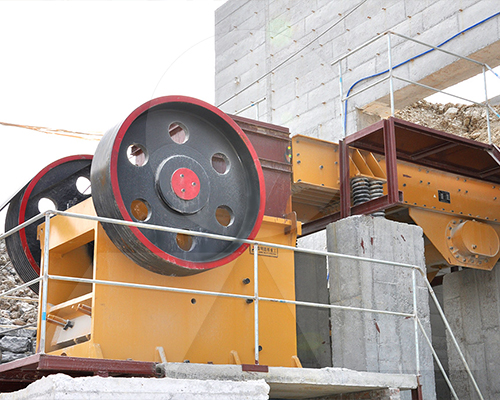Maximizing Efficiency with the Most Advanced Vibrating Feeders in the Mining Industry
In the mining industry, efficiency and reliability are paramount for ensuring high productivity and cost-effectiveness. Among the various types of equipment used in mining operations, vibrating feeders stand out due to their capability to handle large volumes of material, reduce downtime, and enhance overall operational efficiency. This article explores the features, benefits, and best practices associated with using the most advanced vibrating feeders in the mining sector.
Introduction to Vibrating Feeders in Mining
Vibrating feeders are crucial components in mining operations, responsible for transferring bulk materials from storage hoppers to processing or crushing equipment. These machines use vibration to move materials along a trough, ensuring a steady and controlled flow. The latest advancements in vibrating feeder technology have significantly improved their performance, making them indispensable in modern mining practices.
Key Features of Advanced Vibrating Feeders
- High Capacity and Versatility: The latest vibrating feeders are designed to handle a wide range of materials, from fine powders to large, coarse aggregates. Their high capacity allows for continuous feeding of large quantities of material, enhancing productivity.
- Durability and Reliability: Constructed from high-quality, wear-resistant materials, advanced vibrating feeders are built to withstand the harsh conditions of mining environments. Their robust design ensures long-term reliability and reduced maintenance requirements.
- Precision Control: Modern vibrating feeders are equipped with advanced control systems that allow for precise adjustment of feeding rates. This ensures a consistent flow of material, optimizing the efficiency of downstream processing equipment.
- Energy Efficiency: Recent technological advancements have led to the development of energy-efficient vibrating feeders. These machines utilize efficient motors and vibration mechanisms, reducing energy consumption and operational costs.
- Ease of Maintenance: Designed with maintenance in mind, the latest vibrating feeders feature easy access to critical components, reducing downtime for repairs and servicing. Modular designs allow for quick replacement of parts, further minimizing operational interruptions.
Benefits of Using Advanced Vibrating Feeders in Mining
- Enhanced Productivity: By providing a consistent and controlled flow of materials, vibrating feeders help maintain the optimal performance of crushers, grinders, and other processing equipment. This leads to increased productivity and higher output.
- Reduced Downtime: The durability and reliability of advanced vibrating feeders mean fewer breakdowns and less maintenance. This reduces downtime, ensuring that mining operations run smoothly and efficiently.
- Cost Savings: Energy-efficient designs and reduced maintenance needs translate to significant cost savings over the life of the equipment. Lower operational costs contribute to the overall profitability of mining operations.
- Improved Safety: Modern vibrating feeders are designed with safety features that protect operators and reduce the risk of accidents. Automated controls and monitoring systems ensure safe and efficient operation.
- Environmental Benefits: Energy-efficient vibrating feeders help reduce the environmental impact of mining operations. Lower energy consumption and optimized material handling contribute to more sustainable mining practices.
Best Practices for Using Vibrating Feeders in Mining
- Regular Maintenance: To ensure the longevity and optimal performance of vibrating feeders, it is crucial to perform regular maintenance. This includes routine inspections, lubrication of moving parts, and timely replacement of worn components.
- Proper Installation: Correct installation is essential for the effective operation of vibrating feeders. Ensuring that the feeder is securely mounted and properly aligned will prevent operational issues and prolong the equipment’s lifespan.
- Training Operators: Providing comprehensive training for operators on the proper use and maintenance of vibrating feeders is vital. Well-trained operators can identify potential issues early and perform basic maintenance tasks, reducing the likelihood of major breakdowns.
- Monitoring and Adjustments: Continuous monitoring of the feeder’s performance and making necessary adjustments to the feeding rate can optimize the efficiency of the entire mining operation. Using advanced control systems can facilitate real-time monitoring and adjustments.
- Choosing the Right Feeder: Selecting the appropriate vibrating feeder for specific mining applications is critical. Factors such as material type, feed rate, and environmental conditions should be considered to ensure the feeder meets operational requirements.
Conclusion
The use of advanced vibrating feeders in the mining industry has revolutionized material handling processes, offering enhanced efficiency, reliability, and cost savings. By integrating these state-of-the-art machines into mining operations and adhering to best practices for their use and maintenance, companies can achieve significant improvements in productivity and operational sustainability. As technology continues to evolve, vibrating feeders will undoubtedly play an increasingly vital role in the future of mining.
- > Metal Ore Sand Washing Machine: A Crucial Tool Widely Used in the Mining Industry
- > Vertical Shaft Impact Crusher: The Ultimate Guide to Benefits, Applications, and Working Principles
- > Kenya’s Mobile Crusher Market: Trends, Drivers, and Opportunities
- > The Role of Gyratory Crushers in Metallurgical Processes
- > The Role of Vibrating Screens in Iron Ore Processing Plants
- > Efficient Spiral Sand Washer for Removing Clay from Crushed Stone
- > The Application of Jaw Crushers for Coal Crushing in Indonesia
- > Top Mobile Crushing Solutions for Small-Scale Gold Mining Operations in Africa
Hot Product


Online




Message

